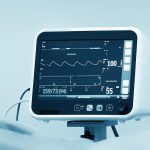Navigating the complex world of In-Vitro Diagnostic Regulation (IVDR) compliance can feel like walking through a regulatory minefield. The European Union’s shift from the In-Vitro Diagnostic Medical Devices Directive (IVDD) to IVDR (Regulation (EU) 2017/746) has significantly raised the bar for medical device manufacturers. If you’re dealing with diagnostics, this regulation isn’t just a guideline – it’s the law. With stricter requirements on clinical evidence, performance evaluation, and post-market surveillance, IVDR compliance is no small feat.
So, what makes IVDR compliance so tough, and more importantly, how can you overcome these hurdles? In this blog, we’ll break down the top challenges that companies face and offer practical solutions to help you stay compliant – and ahead of the curve.
Classification Changes: A Major Shift in Device Categorization
One of the most significant changes under the IVDR is the reclassification of in vitro diagnostic devices. Under the old IVDD, nearly 80% of IVDs were self-certified. IVDR flips that on its head by enforcing stricter classifications – Class A (low risk) to Class D (high risk) – and drastically reduces the number of devices eligible for self-certification.
The Challenge:
Manufacturers are now required to reassess and reclassify their devices based on a set of complex risk-based rules. Many devices that were previously self-declared under IVDD now fall into Class B, C, or even D – requiring oversight from a Notified Body (NB).
How to Overcome It:
- Conduct a thorough gap analysis against the new classification rules.
- Engage with regulatory experts early to ensure correct classification.
- Plan for Notified Body involvement, especially if moving into higher classes.
- Start early. Time is crucial, especially given the bottlenecks with NB availability.
Remember, misclassification isn’t just an error – it’s a compliance disaster waiting to happen. The earlier you address it, the smoother your transition will be.
Notified Body Bottlenecks: Limited Resources, High Demand
With IVDR drastically increasing the number of devices requiring Notified Body certification, the strain on these bodies is evident. As of now, only a limited number of Notified Bodies are designated under IVDR, creating a significant bottleneck in the approval process.
The Challenge:
This shortage has led to long waiting times, application backlogs, and scheduling issues for performance evaluations and technical file reviews. For companies aiming to stay on the market post-transition, this delay could be detrimental.
How to Overcome It:
- Engage with a Notified Body ASAP. Don’t wait for your transition deadline to start.
- Prioritize your product portfolio. Focus on high-revenue or high-risk devices first.
- Keep documentation ready – well-organized and complete files speed up the review process.
- Leverage consultants like MakroCare who can facilitate NB interactions and optimize your submission process.
If you delay, you risk market access. This isn’t just a queue – it’s a race against time.
Post-Market Surveillance (PMS) and Vigilance: From Reactive to Proactive
IVDR demands a proactive approach to post-market surveillance. This means ongoing data collection, analysis, and risk management even after the product hits the market. The PMS system now needs to include a detailed PMS plan, periodic safety update reports (PSUR), and vigilance reports.
The Challenge:
For many companies, this requires a complete overhaul of their quality management systems (QMS). The days of “file and forget” are over. Now, PMS needs to be a living, breathing system integrated into every stage of the product lifecycle.
How to Overcome It:
- Establish a robust PMS system aligned with ISO 13485:2016 standards.
- Use software tools for data collection, adverse event tracking, and trend analysis.
- Train your teams on updated reporting timelines and vigilance expectations.
- Outsource where necessary – especially for small to mid-sized firms lacking internal bandwidth.
You can’t fix what you don’t monitor. PMS under IVDR is your early warning radar – ignore it at your peril.
Technical Documentation: More Than Just Paperwork
Under IVDR, technical documentation requirements have evolved from mere checklists to comprehensive, living documents that need regular updates. The scope, depth, and accuracy of these documents are essential to demonstrate conformity and maintain CE marking.
The Challenge:
Manufacturers now need to compile detailed technical files, including design and manufacturing information, performance evaluation data, and risk management documentation. It’s not uncommon for companies to underestimate the time and resources required to gather and maintain this level of documentation.
How to Overcome It:
- Follow Annex II and III of the IVDR meticulously – these outline specific documentation expectations.
- Centralize your documentation in a compliant, digital format to streamline updates and audits.
- Involve cross-functional teams – R&D, clinical, regulatory, and QA – to contribute to documentation.
- Audit your files periodically to ensure they reflect the most current product status.
Think of technical documentation as your device’s passport. If it’s incomplete or expired, border control – aka the regulators – won’t let you through.
Data Integrity and Traceability: No Room for Error
IVDR emphasizes complete traceability across the product lifecycle. This includes everything from raw material sources to end-user delivery. Data integrity – ensuring that your records are accurate, consistent, and secure – is now a non-negotiable.
The Challenge:
Establishing systems that can guarantee traceability and integrity at every stage is a significant investment. Many legacy systems simply aren’t up to the task.
How to Overcome It:
- Implement digital quality systems that support automated tracking and auditing.
- Utilize unique device identifiers (UDI) in compliance with IVDR Article 24.
- Ensure data validation protocols are in place to prevent loss or corruption.
- Train personnel in data handling best practices to minimize manual errors.
Your data is your defense. Treat it like a vault – secure, precise, and always accessible.
Clinical Evidence for Legacy Devices: Retrospective Isn’t Enough
Many manufacturers assumed that legacy devices already on the market would be grandfathered into the new regulation. Not so. IVDR demands clinical evidence even for these devices, and historical data may no longer meet the new standards.
The Challenge:
Generating new clinical evidence or retrospective performance data can be time-consuming and costly, especially when studies must be redone to meet current standards.
How to Overcome It:
- Re-evaluate your legacy devices to determine if current data meets IVDR criteria.
- Conduct literature reviews and clinical performance studies where gaps exist.
- Work with clinical experts to design compliant studies that minimize time and cost.
- Document and justify any reliance on existing data within your performance evaluation report.
Legacy devices need a new lease on life. Without updated clinical evidence, they’ll be shown the door.
EUDAMED Registration: Centralized, But Still Under Construction
The European Database on Medical Devices (EUDAMED) aims to centralize and improve transparency in device regulation. Under IVDR, manufacturers must register devices, economic operators, and clinical investigations within EUDAMED. However, not all modules are fully functional yet.
The Challenge:
Keeping up with a partially launched, frequently updated system can be confusing. Non-compliance, however, is not an option – it’s essential for traceability and market access.
How to Overcome It:
- Monitor EUDAMED updates through official EU channels.
- Register your Single Registration Number (SRN) and maintain accurate entries.
- Ensure all economic operators in your supply chain are also registered.
- Document your compliance efforts in case of future audits.
Think of EUDAMED as your backstage pass. If you’re not on the list, you’re not getting in.
Risk Management Integration: A Continuous Lifecycle Approach
Unlike IVDD, the IVDR treats risk management as an ongoing process that must be integrated throughout the product lifecycle. This requires updated procedures, continuous monitoring, and feedback loops from PMS activities into design and development.
The Challenge:
Many companies treat risk management as a one-time exercise during product development. Under IVDR, this approach will lead to non-compliance and possible penalties.
How to Overcome It:
- Align your risk management system with ISO 14971:2019 and IVDR Annex I requirements.
- Update risk files regularly based on post-market data, complaints, and performance evaluations.
- Ensure cross-functional collaboration – regulatory, clinical, and quality teams should work together.
- Link your risk management system directly with your QMS for seamless updates.
Think of risk management as your compliance heartbeat. If it stops, everything else fails.
Conclusion
IVDR isn’t just a regulatory upgrade – it’s a seismic shift in how in vitro diagnostics are regulated in the EU. The challenges are real: reclassification, Notified Body shortages, clinical evidence demands, and more. But with the right strategy, expert guidance, and proactive planning, these hurdles can be overcome.
Don’t wait for the deadline to catch you off guard. Start your compliance journey now and set your company up for long-term success in the EU market.


